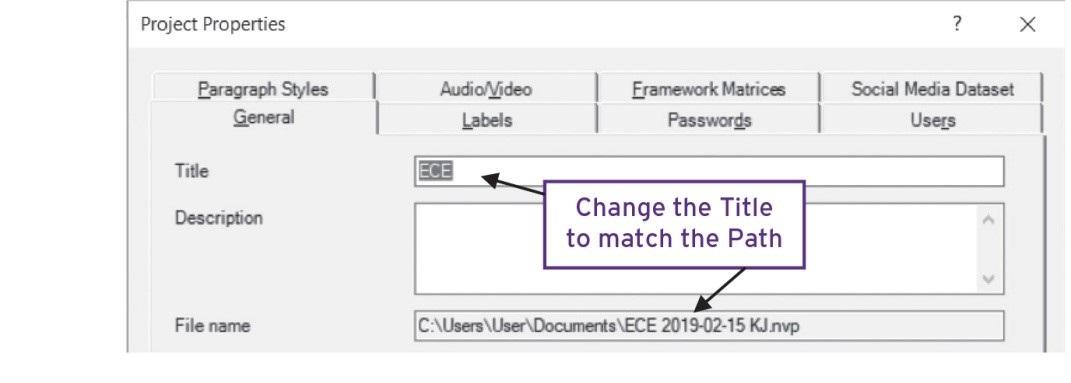Passwords
Passwords can be added to specific Projects to allow for Read/Write access or Read Only access.
- File: > Project Properties > Passwords.
- If you enter a Read/Write Password, you will also enter a Read Only Password.
- You will be asked for the Password the next time you open the Project.
Recording Memos and tracking Users
- With a Memo such as Teamwork in NVivo open and in edit mode, add the date and time (Ctrl + Shift + T) to track the chronology of ideas about team protocols, and write something about your team process (e.g., ‘We need to identify someone to manage the backup of our Projects.’).
- Close the Detail View and look at the columns that are visible in the List View (Figure 11.1).

Figure 11.1 List View of Memos with Detail View closed or on the bottom
This is your first glimpse of NVivo’s ability to track researchers. This list is available for every type of item in the List View of your project (Files, Nodes, Attributes, Sets, Queries, Maps, etc.). We describe ways you might want to customize this list in Chapter 3.
Identifying Users
If you are working on a solo copy of the project, on your own computer, ensure that it is correctly registering you (and not the administrator) as the User each time you open the software. If you work on a shared computer, the default setting that does not prompt for the user on launch should be changed (Figure 11.2).
- File: Options > General tab > Prompt for user on launch (check the box).
Subsequently, each time a researcher launches the software on the computer they will be asked to provide their login name and initials.

Figure 11.2 Setting the Application Options to ‘Prompt for user’ on launch in Windows (left) and Mac (right)




